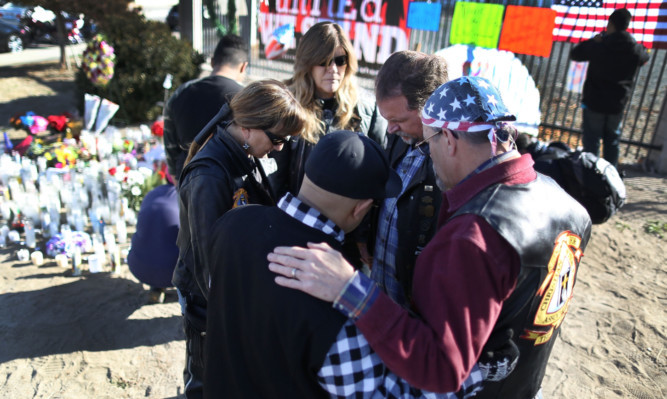The world is a dangerous place and that danger is increasingly close to home.
One of the Prime Minister’s justifications for the action in Syria was to make our streets safe from terrorism.
It is difficult to see how that will be possible. This is why.
As part of his arguments for bombing, Cameron said seven terrorist plots have been foiled by the security services this year alone.
We should all be grateful for their work and that success. However, what the Prime Minister did not choose to stress is that these seven foiled attacks were not “directed” from Syria.
https://youtube.com/watch?v=PFUotcr71v0%3Frel%3D0
They were either “inspired by” or “connected to” Daesh. Not one of them was “directed by” Daesh from Raqqa, or anywhere else for that matter.
These are the terms which are used by the security services to categorise terrorist incidents.
The lowest term of “inspired by” means that individuals, having read the poisonous ideology of Daesh and similar extreme groups, take it upon themselves to commit a terrorist act.
From what we understand the stabbing incident on Saturday night at Leytonstone tube station fits into that category.
It is unlikely the person concerned was acting under orders from Daesh in Syria. Nor is it likely the tube station attack will fit into the second category of being “connected to” Daesh.
That is more of a description which fits the murderous shootings in California.
It is claimed that one of these two perpetrators was in contact with Daesh and pledged allegiance to it. Of course Daesh itself will always claim any large terrorist incident as its own.
It suits the twisted purposes of Daesh to be seen as more important than they actually are and therefore any such event shall be incorporated into their bloody campaign.
However, the FBI do not believe the Californian shooters were part of the Daesh organisation.
They were rather aggrieved and twisted people who sought to cloak their homegrown atrocity in the language of Islamic terrorism.
It is of course entirely possible that as an organisation Daesh is changing and that its capabilities of ordering attacks are increasing. The terrorist cell who attacked Paris were largely French citizens living in Paris or Brussels.
The ringleader, Abdelhamid Abaaoud, is suspected of being part of a branch of Daesh called Katibat al-Battar al Libi, which has its origins in Libya.
He is, however, thought to have become linked with another member of the gang, Bilal Hadfi, in Syria.
Therefore there is a chance that future plots against us will in some way be “directed by” Daesh from Syria.
However it is certain that a far greater number will be “inspired by” or “connected to”.
And furthermore it will be impossible to remove Daesh from Raqqa without an army of ground troops to take the city, a task which is certainly far beyond the capabilities of David Cameron’s “bogus battalions” of 70,000 so-called Syrian “moderates”.
In the meantime the Daesh leadership will merge into the civilian population in Raqqa as well as spreading into Libya and Afghanistan.
And we know already that in the case of the slaughter of British citizens on a Tunisian beach earlier this summer the country link in terms of terrorist training is with Libya not Syria.
I have never thought the best argument against bombing was that it makes us increasingly unsafe. In combating evil you should do what is effective in pursuit of the greater good and take the consequences.
The best argument against bombing is that it doesn’t work. However the chances are that bombing will fail to stop “targeted” attacks but increase the number of “inspired” and “connected” attacks. Therefore what is to be done?
Firstly we should support our security services on their thankless and hugely difficult task of keeping us safe. We also need to accept that a proportion of our police shall need to be armed.
Nobody has said much about the Liberal Democrats and their reckless support for Cameron’s bombing campaign. Indeed nobody has said much about the Liberals recently full stop.
However as an exercise in hypocrisy the Lib Dems’ conduct last week takes some beating. They actually voted for bombing, which by definition at least recognises and perhaps increases the risk of an armed attack on our streets.
However, they have spent the last two years in Scotland feigning outrage that around 2% of our police officers carry firearms.
We cannot expect our police officers to face down an armed terrorist with pepper spray. Therefore we have to set the level of armed police at one which shall allow them to respond quickly and effectively to a possible incident. Our police put themselves in harm’s way on our behalf. They are entitled to expect that they will be enabled to protect themselves.
Finally, we have to redouble our efforts at community cohesion. There has been a spike in anti-Islamic attacks in Scotland since the Paris atrocity, albeit from a relatively low level.
Our best protection against terrorism is the cohesion of our Scottish communities.
